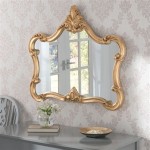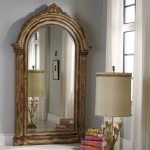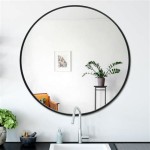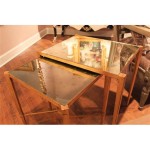White French Mirrors: A Reflection of Elegance and History
White French mirrors, often associated with elegance and sophistication, have graced interiors for centuries. Their enduring appeal stems from a combination of historical significance, craftsmanship, and aesthetic versatility. Understanding the nuances of these mirrors, from their origins to their diverse styles, allows for informed selection and appreciation of their unique character.
The association of France with high-quality mirror production dates back to the 17th century. The development of the mercury-backed mirror, pioneered by Venetian artisans, was adopted and refined by French manufacturers. This technique involved applying a thin layer of tin and mercury to the back of a glass sheet, creating a reflective surface. This innovation led to the production of larger and clearer mirrors than previously possible, revolutionizing interior design and becoming synonymous with French luxury.
The reign of Louis XIV, the "Sun King," witnessed a golden age for French decorative arts, including mirror making. The opulent interiors of Versailles showcased the grandeur of these mirrors, often incorporated into elaborate wall paneling, furniture, and architectural features. The royal patronage elevated the status of mirror makers, further developing their skills and fostering innovation in design and techniques.
The distinct aesthetic of white French mirrors is largely attributed to the use of gesso and paint. Gesso, a mixture of chalk and glue, is applied to the wooden frame, creating a smooth surface for intricate carving and gilding. Subsequently, layers of white paint, often with subtle antiquing or distressing, are applied to achieve the characteristically soft, aged appearance. This technique creates a beautiful contrast between the ornate detailing and the calming white hue.
Several distinct styles of white French mirrors have emerged throughout history. The Louis XV style, known for its Rococo influence, features asymmetrical curves, elaborate floral motifs, and delicate shell carvings. Louis XVI designs, reflecting Neoclassical ideals, exhibit greater symmetry, straighter lines, and classical motifs like laurel wreaths and urns. The French Provincial style, inspired by the simpler elegance of rural French homes, often incorporates rustic elements and less ornate carvings.
Beyond these broader stylistic categories, white French mirrors encompass a range of shapes and sizes. Large, rectangular or arched Trumeau mirrors, traditionally placed above fireplaces or consoles, serve as both decorative and functional elements. Smaller, oval or round mirrors, often used in pairs or groupings, add a touch of refinement to walls and vanities. Handheld mirrors, with their intricate frames, were also popular accessories.
The versatility of white French mirrors allows them to complement a variety of interior design styles. In traditional settings, they reinforce the classic elegance of the space. In more contemporary interiors, they can serve as a contrasting element, adding a touch of history and sophistication. Their neutral white hue allows them to blend seamlessly with diverse color palettes and furnishings.
When selecting a white French mirror, careful consideration should be given to its proportions, style, and condition. The size and shape of the mirror should be appropriate for the intended space and purpose. The style of the frame should complement the overall aesthetic of the room. Examining the condition of the frame, particularly the gesso and paint, is crucial to ensure its authenticity and structural integrity.
Authentic antique white French mirrors can be valuable investments, representing both artistry and history. Reproductions are also widely available, offering a more affordable alternative while still capturing the essence of French design. Regardless of whether one chooses an antique or a reproduction, a white French mirror can enhance a space with its timeless elegance and inherent charm.
Proper care and maintenance can preserve the beauty of a white French mirror for generations. Dusting the frame regularly with a soft cloth helps prevent the buildup of grime. Avoiding exposure to excessive humidity or direct sunlight can protect the gesso and paint from damage. For significant repairs or restoration, consulting a professional conservator is recommended.
The enduring popularity of white French mirrors is a testament to their timeless appeal. Their historical significance, intricate craftsmanship, and stylistic versatility continue to captivate designers and collectors alike. Whether used as a focal point or a subtle accent, a white French mirror adds a touch of elegance and refinement to any interior.

Antique French Style Wall Mirror Gloria White Shabby Chic Mirrors

Emily Mirror In White French Frame Vintage Wall Decor Bedroom

The Annecy Mirror French Ivory 5ft High 239 00 Mirrors White Cau Luxury Furniture And Rococo Reion Antique Baroque Style Specialist

Antique White French Ivory Shabby Chic Over Mantle Scroll Arch Wall Mirror

Provencale Antique White French Style Overmantle Mirror Painted Furniture Mirrors

French Victorian White Non Beveled Vanity Wall Mirror V039 26 5 32 The Home Depot

The Annecy Dress Mirror 7ft Pure Matt White 329 00 Mirrors Cau Luxury Furniture And Rococo Reion Antique Baroque French Style Specialist

White French Louis Mirror Overmantle Vintage

Stonebriar Collection Small Round White French Provincial Mirror 8 In H X W Sb 5041a The Home Depot

Tono White Carved Antique French Style Floor Mirror Standing Mirrors From Homes Direct 365








